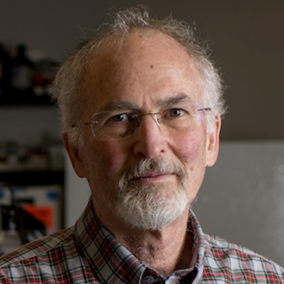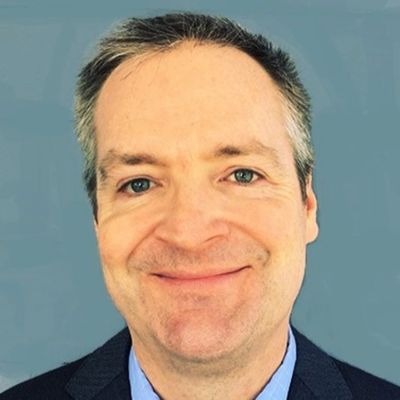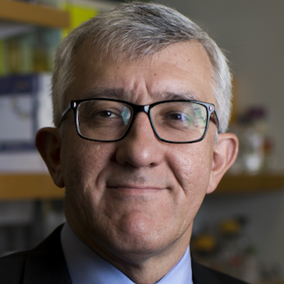| |
Beyond HOMINGS |
 |
| |
Forsyth Oral Microbiome Core |
⦿ New 16S rRNA analyses
⦿ Big data genomic analysis
⦿ Collaborations
|
| |
|
|
|
MICROBIOME CORE EXPERTS |
 |
Tsute (George) Chen, Ph.D.
✉ tchen@forsyth.org
Director of Forsyth Oral Microbiome Core
Director of Forsyth Bioinformatics Core
Research Professor, Department of Microbiology
ADA Forsyth Institute
|
Scientific research today is truly interdisciplinary—computer science, statistics,
mathematics and engineering all play an important role in the life sciences.
Dr. Chen's work illustrates how far research has evolved and its integration
with different disciplines. As Forsyth's leading bioinformatics expert, Chen is
responsible for analyzing huge amounts of data and transforming it into biologically
meaningful information that other scientists can understand and interpret to gain
new biological insights.
Dr. Chen is also focusing on the "multi-omics" aspects of oral microbiology. "Omics"
refers to the study of the "entirety" of various types of bio-molecules of an
organism using modern high-throughput analytic technology. The bio-molecules
that can be measured in this manner include DNA (genomics), RNA (transcriptomics),
proteins (proteomics), and metabolites (metabolomics). All of these "omic" studies
generate enormous amounts of computer data and require much more time analyzing
than generating them. Hence, the field of bioinformatics is playing a pivotal
role in contemporary multi-omics research.
|
| |
 |
Bruce J. Paster, Ph.D.
✉ bpaster@forsyth.org
Formal Director of Forsyth Oral Microbiome Core
Emeritus Member of Staff
Department of Microbiology
ADA Forsyth Institute
|
The ultimate goal of the Paster lab is to determine the bacterial etiologies of
a variety of oral diseases or afflictions, such as rampant caries in children,
halitosis, periodontitis, refractory periodontitis, necrotizing ulcerative periodontitis
in HIV subjects, and noma, a facial gangrene that primarily affects malnourished
children in developing countries. In collaboration with Dr. Floyd Dewhirst, they
defined the microbial diversity of the human oral cavity, which is collectively
comprised of about 700 bacterial species. Approximately 30 percent of these species
still cannot be grown in culture.
Presently, Dr. Paster's research focuses in three major areas. The first involves
the microbiome of adolescents who were prenatally-infected with HIV. An important
finding was that although HIV-infected youth have more caries than HIV exposed but
uninfected children, their oral microbiomes do not differ from the control groups.
The second involves an ongoing study on the progression of periodontal disease.
An important finding was that there may be "danger" microbial profiles that may
serve as biomarkers to assess the risk of periodontal disease before there are
clinical signs. Early detection of most diseases will allow for better treatment.
The last area involves a new interest in looking at the impact of circadian rhythm
on the oral microbiome. Such studies will help decipher relations between the
microbiome, the immune system, and the circadian clock - all important players in
human health. These data may provide new treatments regimens that focus on circadian rhythm.
|
| |
 |
Matthew Bronstad, Ph.D.
✉ mbronstat@forsyth.org
Senior Biostatistician
Core Facilities
ADA Forsyth Institute
|
Dr. Bronstat has worked in several fields since his PhD: mainly psychophysics,
optometric and ophthalmological research. Prior to joining ADA Forsyth, he worked at a contract
research organization where he analyzed clinical trial data, mainly for phase 2 and 3 oncology
or rare disease pharmaceutical agents.
The thread binding these diverse activities is his interest in data analysis and reporting.
Dr. Bronstat will use his expertise in statistics assisting with the upstream experimental design and
the downstream statistical analysis of microbiome data.
|
| |
MICROBIOME CORE OVERSIGHT COMMITTEE |
 |
Xuesong He, PhD, DDS
Senior Member of Staff
Department of Microbiology
ADA Forsyth Institute
| |
Trained as a dentist and microbiologist, Dr. He is fascinated with the
host-associated microbial world and amazed by their significant roles in the
hosts' health and disease. He has extensive training and expertise
in microbial cultivation, bacterial physiology, genetics and pathogenesis,
particularly host associated microbiome, microbial ecology as well as
host-microbial interaction. His interests span a broad range of topics
focusing on basic and translational research. Some of his research
interests include: 1) Using novel culturing methods to isolate and
study the physiology and pathogenesis of thus far "uncultivated" bacteria,
including Candidate Phyla Radiation (CPR) group within oral cavity; 2)
Understanding the novel interaction between the newly discovered human
oral epiparasitic nanobacteria and their bacterial host; 3) Studying the
ecological and social aspects of host-associated microbiome, 4)
Investigating the role of host-derived small RNA (sRNA) in modulating
host-microbial interaction. Dr. He is the contact PI of multiple active
R01 grants from NIH, and has extensive collaboration with researchers
from different disciplines and frequently published in peer-reviewed
Journals. The national and international impact of his research can
be proved by his over 70 well-cited publications in leading scientific
journals including PNAS, PLOS Pathogens, ISME J, Cell Reports, Journal
of Endodontics, Journal of Dental Research, and Trends in Microbiology.
|
| |
 |
Alpdogan Kantarci, DDS, MSc, PhD
Senior Member of Staff
ADA Forsyth Institute |
Through the integration of clinical and laboratory research, Dr. Kantarci
focuses on helping people live healthier lives with healthy mouths. The underlying theme in
much of his research is inflammation - a connecting factor between oral disease and systemic
diseases. Specifically, Kantarci investigates the molecular mechanisms and resolution pathways
of inflammation in patients with periodontal disease and how systemic diseases are
connected with periodontal disease. Since inflammation is the basis of many diseases
in the human body, emphasis in Dr. Kantarci's lab is placed on understanding the role of
various conditions that affect the immune and inflammatory responses by the host to
microbes. Recent work from the Kantarci laboratory is focused on the link between
Alzheimer's disease and periodontal disease.
As a board-certified periodontist and dentist, Kantarci is focused on saliva as
a diagnostic milieu for dental-oral diseases as well as systemic conditions. He has
been working on the clinical applications of high-throughput analysis in his research,
particularly using xMAP Multiplexing (Luminex) for salivary diagnostics.
In parallel, he works on the role of osteoblasts and osteoclasts during orthodontic tooth
movement and is applying novel techniques to shorten the treatment time for orthodontic
patients. These include the use of minimally invasive surgical approaches and non-invasive
technologies such as visible light. The benefits of accelerated tooth movement will be
especially important for adults who want less time in braces.
|
| Copyright 2020 Forsyth Institute |
| Page last updated: October 27, 2025 14:04:37 | | |
|
|